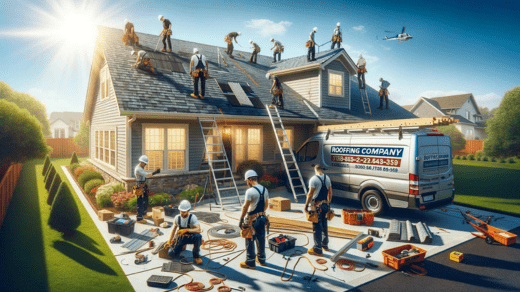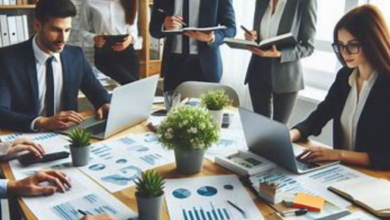Asphalt shingles have long been favored by homeowners for their balance of durability and affordability. Originating in the early 20th century, these shingles have become a staple in roofing materials, covering millions of homes across the globe. Over the years, advancements in manufacturing and materials science have contributed to significant improvements in the quality and performance of asphalt shingles.
Manufacturers have responded to the demands of the industry and the expectations of homeowners by developing shingles that are more resistant to weathering, ultraviolet rays, and physical damage. Innovations in the composition of asphalt shingles have led to increased longevity, with some modern shingles carrying warranties of up to 50 years—a noteworthy increase from the standard 15 to 20-year warranties offered in the past.
Moreover, the aesthetic appeal of asphalt shingles has greatly expanded, providing homeowners with a wide array of textures, colors, and shapes. This has allowed for greater customization and the ability to complement various architectural styles. Eco-friendly developments have also emerged, with shingles now being designed for better energy efficiency and recyclability, reflecting a growing conscientiousness within the industry towards environmental sustainability.
Historical Development of Asphalt Shingles
Asphalt shingle roofing has evolved significantly since its inception in the early 20th century. Initially, these shingles were made from felt paper saturated with asphalt to make them waterproof. They were then coated with crushed oyster shells, slate, or wood fiber to provide protection from the elements.
The 1920s saw the introduction of organic shingles, which used waste paper and cotton rag as the base. This made them more affordable and easier to produce. These shingles used a heavier coat of asphalt, which increased their durability but also made them more prone to fire.
In the 1950s, fiberglass began to replace the organic felt paper. Fiberglass offered several improvements:
- Lighter weight
- Greater fire resistance
- Resistance to tearing
Cement has also played a role in the development of shingles. It’s been used in conjunction with paper materials to add weight and rigidity to the shingles, which improves their resistance to wind uplift and damage.
By the 1970s, fiberglass-reinforced shingles became the norm, with innovations focusing on enhancing durability, weatherproofing, and aesthetic appeal. Later advancements introduced more color and texture options, with some mimicking the look of natural wood or slate. Modern shingles also feature specialized granules to reflect UV rays and reduce heat absorption, thus improving energy efficiency.
Advancements in Manufacturing Processes
The manufacturing processes of asphalt shingles have seen significant improvements, enhancing their durability and designs. New materials and technologies have led to stronger and more versatile products.
Introduction of Fiberglass Mat
Fiberglass mats replaced the traditional organic felt mat in asphalt shingles, offering superior tear strength and fire resistance. The Asphalt Roofing Manufacturers Association (ARMA) notes that the inclusion of fiberglass has reduced the weight of shingles and increased their longevity. Manufacturers use a layered approach: a fiberglass mat is coated with polymer-modified asphalt, creating a sturdy base for granules to adhere.
Polymer-Modified Asphalt Technology
This technology involves the alteration of traditional asphalt with polymers, resulting in polymer-modified shingles that are more resistant to extreme weather. The use of polymers enhances the flexibility and strength of the shingles, allowing them to withstand temperature fluctuations better. These advancements in manufacturing processes have led to improved product performance, as endorsed by testing protocols recommended by ARMA.
Innovation in Design and Shapes of Shingles
Asphalt roofing shingles now come in various designs and shapes, thanks to advances in manufacturing technology. Designs have evolved from standard three-tab shingles to architectural and premium styles. Shapes now range from scalloped edges to large, laminated squares capable of mimicking the look of slate or wood shakes.
Manufacturers have used these innovations to cater to a broader range of aesthetic preferences and to meet regional architectural styles. The design advancements have also allowed for improved overlaying techniques, increasing the product’s lifespan and performance.
Enhancements in Durability and Performance
Asphalt shingles have also seen significant advancements in their ability to withstand environmental stressors, demonstrating marked improvements in wind and impact resistance, fire resistance ratings, and resilience against algae and ultraviolet (UV) light degradation.
Increased Wind and Impact Resistance
Shingles have been re-engineered to better resist wind uplift and damage from flying debris. Modern asphalt shingles adhere to enhanced standards, such as those set by ASTM D7158, which classify shingles into wind resistance categories ranging from Class D (90 mph) to Class H (150 mph). Moreover, advancements in material composition and shingle design have played a crucial role in impact resistance. Many shingle products now meet UL 2218 standards, signifying their ability to withstand impacts from hailstones without sustaining damage that would compromise their integrity.
Improvement in Fire Resistance Ratings
Today’s asphalt shingles are more fire-resistant than ever before. They are commonly classified based on their fire rating, with Class A being the highest rating achievable. Class A shingles, for instance, must pass rigorous testing, including intermittent flame, spreading of flame, and burning brand tests, as defined by standards like ASTM E108 and UL 790. These improvements have reduced the risk of fire spread, contributing to safer residential and commercial structures.
Advances in Algae and UV Resistance
To combat the degradation caused by algae growth and UV radiation, shingles have been fortified with innovative technologies. Copper and zinc granules are now integrated into shingle surfaces to provide long-term algae resistance. This development has extended the aesthetic lifespan of roofs and reduced maintenance requirements. Additionally, UV-resistant additives have been incorporated into shingle manufacturing to protect against the deteriorating effects of sunlight exposure, ensuring that shingles maintain their performance and structural integrity over time.
Evolution of Asphalt Shingle Styles and Aesthetics
Asphalt shingles have undergone significant transformations in their design and appearance as well, greatly expanding the options for enhancing a building’s curb appeal.
Variations in Colors and Textures
The array of colors available in asphalt shingles has progressed from basic blacks and grays to a diverse palette. Manufacturers now offer a variety of colors, from subtle earth tones to bold blues and greens, providing homeowners with greater flexibility to match their roofing to the property’s exterior. Texturally, shingles have also evolved. Early shingles were mostly flat and lacked dimension, but modern shingles exhibit textures that mimic natural materials such as wood and slate, giving them a more sophisticated, aesthetically appealing look while also improving their performance against elements.
Development of Laminated and Architectural Shingles
Laminated and architectural shingles represent a leap forward in both style and function. Unlike the traditional three-tab shingles, laminated shingles consist of two or more layers bonded together to create a contoured, more durable product. Architectural shingles take this one step further, offering varied shapes and sizes that produce a three-dimensional appearance on the roof. These styles not only enhance a property’s visual appeal but also offer improved wind resistance and longevity. Critically, these innovations have allowed for a wider variety of aesthetic choices without compromising on protection.
The Shift Towards Environmental Sustainability
Asphalt roofing has seen significant advancements in environmental sustainability. Manufacturers have adopted the use of recycled materials, integrating post-consumer waste like plastic and rubber into the shingle production process. This not only reduces the demand for new, virgin materials but also helps to lower the environmental footprint.
Energy efficiency is another key area of improvement. Modern asphalt shingles are designed to better reflect solar energy, reducing the heat absorbed by buildings and thereby decreasing the energy needed for air conditioning. ‘Cool roofing’ technology incorporates granules that reflect more UV radiation, which is vital for improving a building’s energy efficiency.
Eco-friendly shingle disposal is an emerging concern being addressed with new recycling programs. Increasingly, shingles are being repurposed for pavement projects, contributing to the circular economy. Here is a snapshot of improvements:
Industry standards for asphalt roofing are evolving to emphasize sustainability. Certifications like ENERGY STAR have recognized energy-efficient shingles, guiding consumers towards environmentally sound choices.
Companies are also becoming more transparent about their environmental impact, providing extensive documentation on the life-cycle of their products. These shifts not only mitigate environmental damage but also offer long-term economic benefits by reducing waste and conserving energy.
Improving Roofing System Components
In this area asphalt shingle technology has advanced considerably, providing better protection against water damage and ensuring efficient airflow. Enhanced adhesives and sealants contribute to the longevity of roofing systems.
Superior Waterproofing and Ventilation Solutions
Advanced materials and design improvements have significantly bolstered the waterproofing capabilities of asphalt shingles. Manufacturers are now using higher-quality asphalt with fine mineral fillers that increase density, resulting in a more impermeable barrier against moisture. Roofing contractors can now offer consumers products with class-leading waterproofing performance that withstand severe weather conditions.
As for ventilation, it has become an integral part of modern roofing systems. Proper ventilation helps regulate attic temperatures and reduces moisture, preventing rot and mold growth. Technological advancements have led to the integration of ventilation into asphalt shingles themselves or the underlayment, providing continuous airflow without compromising the aesthetic appeal.
- Waterproofing: Utilizing high-quality asphalt and synthetic underlayment for enhanced moisture resistance.
- Ventilation: Designing shingles and underlayments that promote airflow to keep attics dry.
Enhanced Adhesives and Sealant Technologies
Sealants and adhesives have undergone significant improvements to reinforce asphalt roofing shingle performance. Premium adhesives now ensure a stronger bond between the shingles and the roof deck, which reduces the risk of blow-offs during high winds. These advanced adhesives are complemented by improved sealant formulas that provide better elasticity and temperature flexibility, maintaining the seal through extreme temperatures and weather fluctuations.
- Adhesives: High-strength bonding formulas for securing shingles firmly to prevent wind damage.
- Sealants: Flexible and durable compounds that maintain their sealing properties in varying weather conditions.
Extended Warranties and Consumer Confidence
As the quality of asphalt shingles has advanced, manufacturers are increasingly confident in their products. This confidence is reflected in the extension of warranty periods. Traditionally, asphalt shingles came with warranties ranging from 15 to 20 years; however, modern advancements have seen warranties extend up to 50 years. These extended warranties guarantee not only the replacement of defective shingles but also sometimes cover the labor costs of re-roofing.
Consumers gain confidence in the longevity and reliability of their roofing through these enhanced warranty offers. They provide a promise beyond the mere purchase, implying that the shingles are built to last and perform well over time. The extended warranties are a testament to the improvements in reliability and longevity that result from innovations in shingle design, manufacturing processes, and the materials used. Extended warranties have become an important factor for consumers when selecting roofing materials. These warranty periods have transitioned from mere assurances to compelling selling points, demonstrating the industry’s trust in their evolving products. As the warranties lengthen, they underscore the industry’s commitment to quality and durability, thus enhancing consumer confidence.
Advances in Testing Standards and Building Codes
The enhancement of asphalt shingles is closely linked to the evolution of testing standards and the stipulations of building codes. These standards and requirements ensure that shingles can withstand severe weather conditions and meet the expectations of both the insurance and roofing industries.
Rigorous Wind Tunnel and Field Testing
Testing Standards: Over the years, testing standards for asphalt shingles have seen significant improvements. The ASTM D 3161 standard test method for wind resistance of asphalt shingles involves simulating high wind conditions in a controlled environment to assess the ability of shingles to resist wind uplift forces. Wind tunnel and field testing procedures have become more comprehensive, moving beyond laboratory conditions to incorporate real-world performance and durability.
Real-World Performance: These tests are designed to mirror the actual conditions asphalt shingles would face on a building. By simulating intense wind speeds and variable weather conditions, manufacturers can fine-tune the composition and design of shingles for enhanced performance and longevity.
Modern Insurance and Building Code Requirements
Insurance Industry: The insurance industry has played a pivotal role in advocating for better-tested and more resilient asphalt shingles. They often require roofing materials to adhere to strict standards to qualify for policies, pushing the roofing industry to innovate. This has resulted in products that are far more reliable and able to withstand the forces of nature.
Building Codes: Along with the insurance industry changes, modern building codes frequently incorporate the findings of these rigorous tests, dictating the minimum acceptable performance for shingles to ensure public safety and property protection. By adhering to updated codes, the roofing industry ensures that it is responding effectively not just to market demands but to safety concerns as well.
Impact on the Roofing Industry and Homeowner Choices
Asphalt shingles have long been a popular roofing material due to their cost-effectiveness and ease of installation for the roofing company. The roofing industry has seen substantial advancements in shingle technology, reinforcing their dominance in the market.
Homeowners have benefited considerably from these improvements. The introduction of architectural asphalt shingles and premium shingles has provided a broader range of aesthetic options without compromising durability. These high-quality shingles mimic the appearance of more expensive materials like slate or cedar shakes, giving homeowners the ability to customize their roofs to reflect individual style preferences while staying within budget.
The industry has seen a shift towards these more sophisticated shingle options, as they deliver both functional and aesthetic improvements. The longevity and enhanced performance of modern shingles also mean lower maintenance costs and greater affordability over the lifespan of a roof.
Professional roofers have had to adapt to these trends, broadening their expertise to include the installation and maintenance of these improved shingle types. As a result, the roofing industry has expanded its services, meeting the growing homeowner demand for quality and variety in roofing materials.





